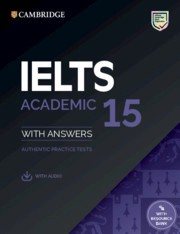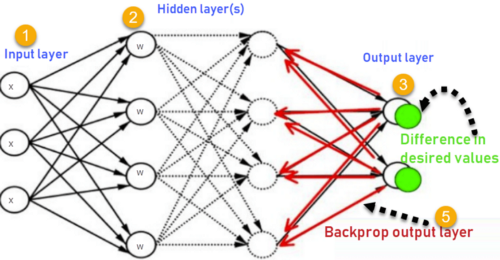IELTS Reading Band 9 Tips — An End to End Self-Study Guide
How I used Machine Learning techniques to improve my reading skill.
 Photo by Thought Catalog on Unsplash
Photo by Thought Catalog on UnsplashIntroduction
IELTS, which stands for International English Language Testing System, is a standard international English test that assesses English skills in four sections reading, writing, listening, and speaking. Most international institutes and universities put an IELTS minimum requirement for their international applicants, so they become sure that no communication issues happen for non-English speakers after the recruitment process.
Last year was so tough for me. Struggling with the undergraduate thesis, working on a research paper, communicating with professors and universities for my graduate program, and taking required tests were intensely overwhelming. I took IELTS because it was compulsory for my graduate study, and I succeeded in achieving the overall band score of 7.5. The impressive part of my result was the reading section, which I hopefully got a full mark score in that. IELTS Reading consists of 3 sections, 40 questions, 60 minutes
Each section contains one long text.
Texts are authentic and are taken from books, journals, magazines and newspapers. They have been written for a non-specialist audience and are on academic topics of general interest.
Texts are appropriate to, and accessible to, candidates entering undergraduate or postgraduate courses or seeking professional registration.
Texts range from the descriptive and factual to the discursive and analytical. Texts may contain non-verbal materials such as diagrams, graphs or illustrations. If texts contain technical terms, then a simple glossary is provided.
There are three texts and 40 questions. [reference]
I will explain some tips that I used in my self-study to achieve this score in the current post.
The critical factor that makes this post unique is the fast achieving self-study approach that I will explain. For my undergraduate thesis, which resulted in an ACL2020 WiNLP paper, I used ML approaches to gain the best result to detect individuals’ personality traits based on their essays. You can read the final version of my paper here. Since I was overwhelmed with several tasks , I did not find much time to focus on my IELTS study. So, I decided to leverage my ML skills to build a focused study plan to improve my IELTS result. Hopefully, it worked, and here, you can read my self-designed method.
This method is inspired by the Deep Learning models training process and consists of four parts: weight initialization, forward pass, backpropagation and error analysis, and optimization.
The Start Line — Weight Initialization

When you want to learn a new subject, you should have a brief understanding of what you are going to do and how to start. That is the exact process that is used for training deep models too.

First, pick the dataset you want to learn. There are numerous test packs for IELTS, but none are as genuine as the original Cambridge IELTS test books. As far as I know, 15 versions have been published, and each year, a newer version comes out based on the recent actual tests.
The second essential criterion before the beginning is how to start it? How can you commence something that you do not have any idea about it? That is easy! Just use what you have known before from your prior successful test experience and try to reuse it. For example, I remembered that I used to read the questions first and highlight the keywords before jumping into the text for my undergraduate university entrance exam. If you think that you are totally lost, you can get some help from these free resources, but keep in mind not to spend much on them at this phase:
A similar method is also used for Deep Learning. Weights of the model are sometimes randomly assigned, and sometimes, which usually result in better accuracy, they are obtained based on the pre-trained models on other tasks. That is the exact thing you will do when you remember your previous experience to use it for this new test.
Take a Sample Test — Forward Pass

Ok, why not take a sample test to see where you are standing? Several questions may pop into your mind when you want to start. I try to guess by answering some of mine when I started my first test. The critical factor is to extract as much information as you can from this test. So, I developed my unique method in this regard.

Always keep the time you are devoting for each section. First, think that you are taking a real exam, so you have just an hour and not a minute more. It is better to track the time you engage with each passage. It might be a bit less than 20 minutes for the first two articles and the remaining for the last one.
I suppose that you are done with your 1-hour challenge. Tired? But you should not stop. Keep up the good work and finish all the parts you missed. Track the missed parts and the time you are struggling with them. After you have done all you could, this section is finished.
This part aims to see what your faults are and where to focus and find the priorities because It’s not efficient to learn the parts that you are already expert at them! This method is also used to train a deep model. The data is fed to the model to determine what we got first and realize what should be done next.
Analyze your test — Back Propagation

Up to now, you have taken your first test, and you should now focus on interpreting it. Use the answer key to find out your incorrect answers, find their cause, and try to convince yourself that the correct answer is not what you thought. After these analysis phases for each question, you can use this website to see the explained answer.
When you finished, give yourself two scores based on the limited time and another for the unlimited. You can also use this website to convert your raw score to see what band score you probably get.
Now, draw two tables. The tables might varies according to the way that you are convenient with. I explain mine. One is for each test which tells you how many mistake answers you had for each passage, and the second one is question type based table. It should give you a complete overview of how you performed based on each question type. Try to include both limited and unlimited scores in them, and after that, you are done with this phase!



A similar method that is used in training deep models is called backpropagation. After feeding the data into the model, it should find the errors in each step to know which weight in which direction must be optimized. That is the exact trick we are using in IELTS, seeing the problem (question type and passage), and how much they should be optimized to reach your goal.
Boost your skills — Optimization

This is the final step. Now you are totally aware of what is lacking and what is your strengths. Prioritize your “to be improved” components based on the distance between what you achieved and what you expected. If you can almost receive a full mark in a test with a reasonable extra time and lose much in the standard time frame, you should focus on speed. If you are slow in a specific question type, the more scrutinized decision may be focusing on some training speed tests on that particular question type and revise your answering method for that part. Generate some questions that you should look for. Be goal-oriented and avoid roaming around aimlessly.
Now you should look for answers. Hopefully, you are provided with a host of options, so it will not be a concern. YouTube is one of the bests. Just search your produced questions (or only the keywords) and pick some guides to watch. You will learn many quick and efficient solutions from experts for free! You can also use the mentioned sources in the first stage or ask your friends or teachers about it. Try the answers in your next tests and re-evaluate yourself. If they worked, keep going and do not change it anymore and focus on another part of your new analysis table, and if they do not, try other solutions. Some optimum solutions always exist for everyone, so keep up working hard! The remaining is up to your work and how many times you repeat this 4 steps cycle.
Regarding the relevance of this stage to optimization, have a look at the following image:

The goal is to reduce the error (the difference between your current score and optimum score), and the task is finding how, how much, and on which direction you should optimize. You can assume each question type as an independent dimension, and the method you choose is the direction you want to go to. The prioritization step I explained before is that focusing on some dimensions and optimizing them will not affect your result much, so focus on the ones with more space for improvements and do not waste your resources ( time and energy)!
These steps can be divided into more personalized stages, but I avoided telling them to keep it general. Personally, I tried to leverage some deeper connections based on my NLP experience, such as Masked Language Models, to get a better insight, and I am sure that you can do so. Build your path and break a leg!
If you have more sources, recommendations, and comments, I appreciate if you reach out to me.